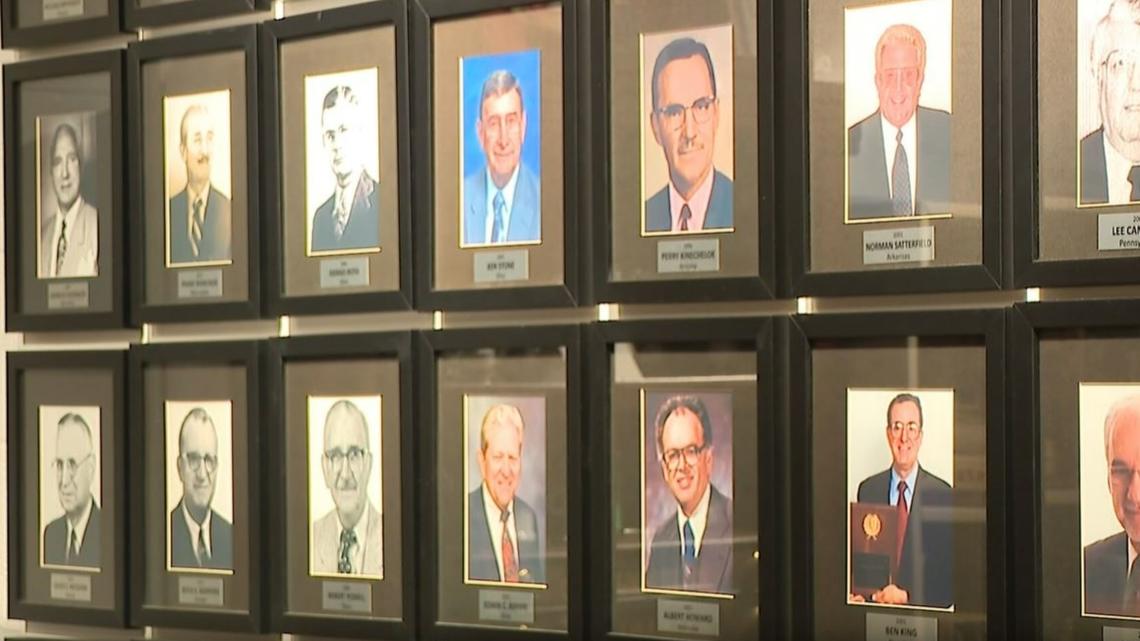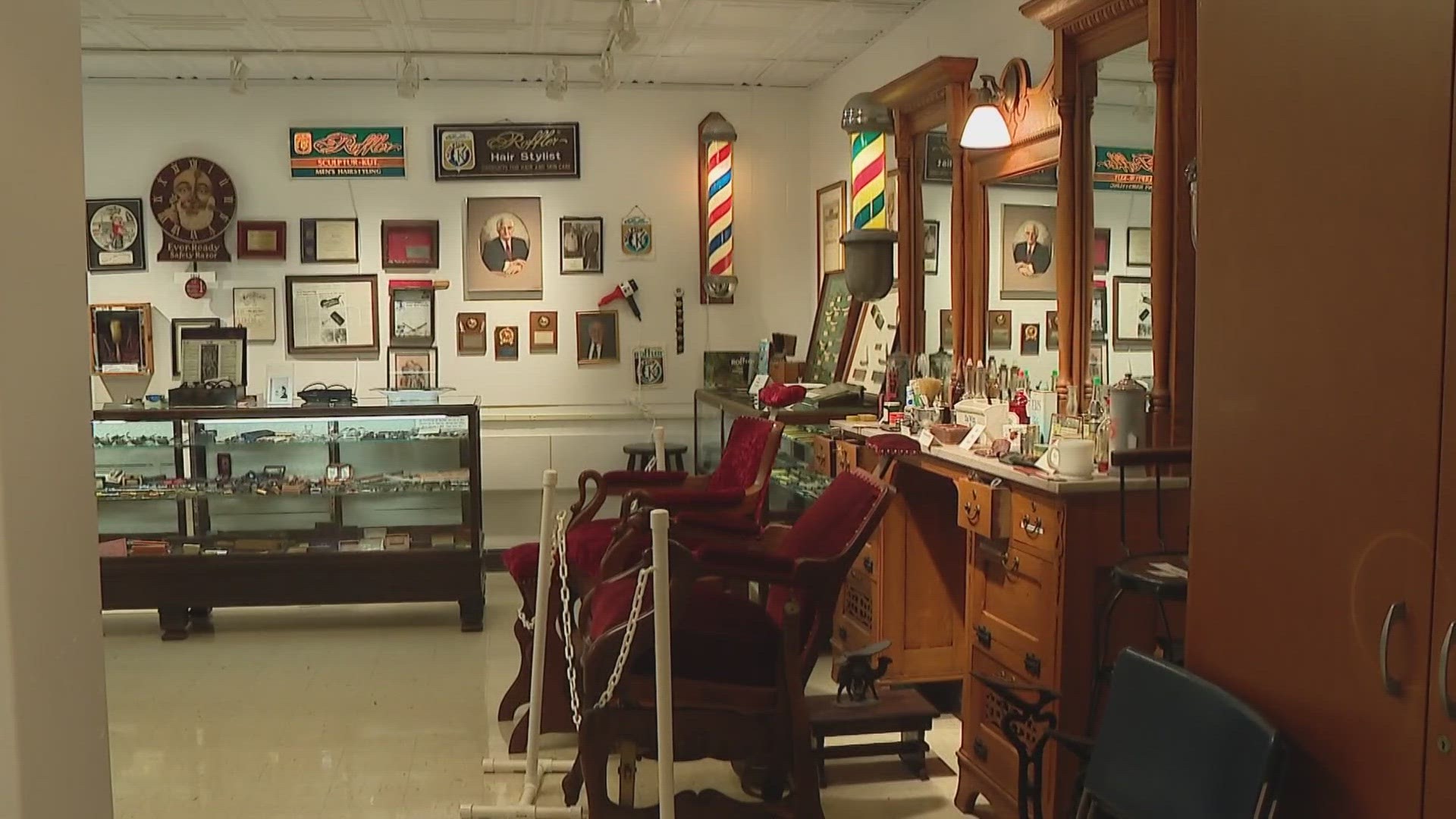CANAL WINCHESTER, Ohio — You wouldn't expect to find centuries' worth of history on display in a nondescript building in suburban Canal Winchester. But that's exactly what you'll find at the National Barber Museum and Hall of Fame.
Established in 1988 by Ed Jeffers, the museum strives to preserve and promote the rich history of the barbering profession. Their goal is to transport visitors back in time through the thousands of maintained barbershop items from all over the country.
The museum sits inside more than 5,000 square feet and houses artifacts in six rooms dating back to the 16th century.
Museum Director and Curator Mike Ippoliti described how barbershops were much more than just a place to get your hair cut.
"It's a gathering place," said Ippoliti. "You sit there, you talk about people, [the barber] takes care of you. Guys would go there and lie to each other and gossip and hear all the good news."
One of the most recognizable symbols of a barber shop are the red, white and blue rotating poles often found displayed outside the establishments. These signs are called "barber's poles", a symbol that the museum has a full room dedicated to, with over 75 poles on display.


However, Ippoliti said people tend to have a common misconception about the meaning of the colors of the pole.
"A lot of people think the red, white and blue has something to do with patriotism, it's not," he said. "It has to do with when the barbers were also the surgeons and the dentists. The white is a bandage, the red one is blood and the blue one is the vein."
Barbering, known as the second-oldest profession, has been practiced by thousands of individuals over time and has left its mark on history.
The Barber Hall of Fame was started in 1965 and recognizes barbers from throughout history who have made a significant impact beyond giving customers a clean cut.
Currently, there are 75 individuals in the Hall of Fame, with more being inducted each year. One of which has a last name that you might recognize.


"Vernon Winfrey, Oprah's father, he cut hair up until he was 94 years old," said Ippoliti. "He used to cut the homeless' hair, he pulled a number of kids off the street and as far as keeping them out of trouble."
Above all, Ippoliti said he finds comfort in the sheer existence of this historical institution.
"It was very comforting to know that this place will continue to exist," he said.

